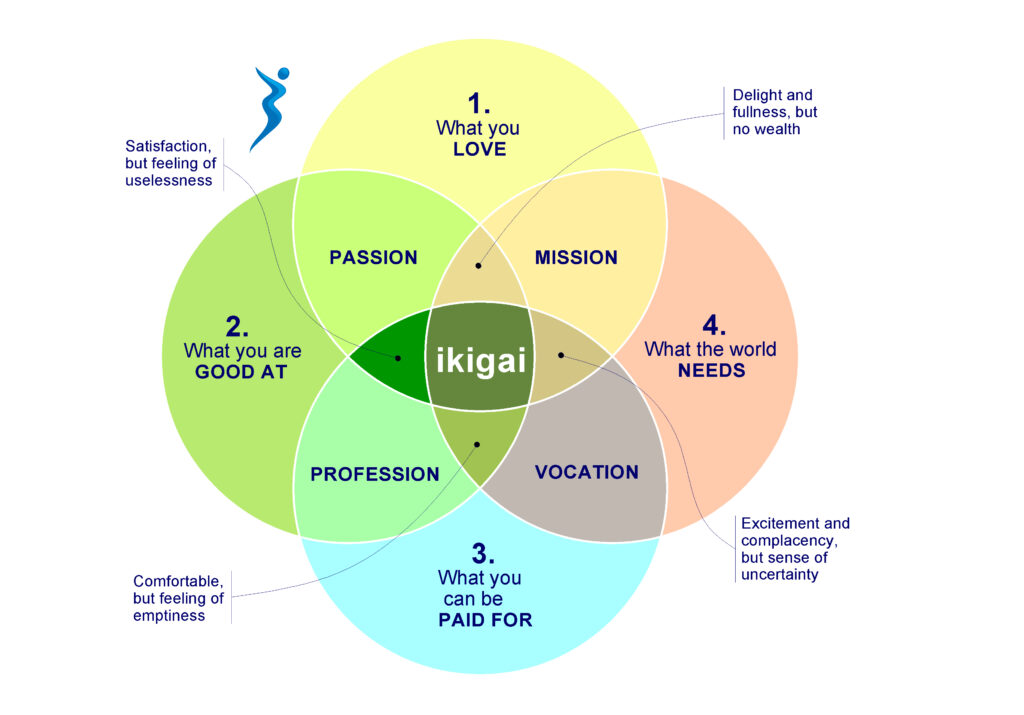The reason for being
Ikigai is a Japanese concept, meaning the reason for being. It’s a great tool to provide us with the desired clarity in order to understand what we want to do in life, what exactly is our right place in the society. It takes a while, but it surely works!
How do I find my own ikigai? Start by making four lists with what:
- you love to do
- you are good at
- can bring you money
- people need

Let’s dive in
Now, let’s check the intersections:
Passion
1+2 is what you love doing and you are good at it. That’s your passion.
Profession
2+3 is what you are good at and it can bring money. This can be your profession.
Vocation
3+4 is what can bring money and people need it. This can be a vocation.
Mission
4+1 is what people need and you love to do it. That’s your mission.
Let’s now look at it in a bit more depth
1+2+3: You are good at it, you love it, it brings money but the world doesn’t really need it. You receive a lot of satisfaction but you also get a feeling of uselessness.
2+3+4: You are good at it, it brings money, people need it, but you don’t really love it. You are comfortable doing it, but you get a feeling of emptiness.
3+4+1: It brings money, people need it, you love it, but your skills are not yet developed at an adequate level, so you are not good at it. You feel excitement and complacency but you also feel some uncertainty.
4+1+2: The world needs what you are doing, you are good at it and you love it, but it doesn’t bring enough money. You feel delight and fullness but there is no wealth.
1+2+3+4: Ikigai. Here is your sweet spot. Even if you have only one thing common in all your 4 lists, then that’s your ikigai, your reason for being. That’s your ideal place in life!
Self-reflection questions
If you have not found your ikigai yet, do not worry! There is still hope. You just need to do a little more work:
- Locate where you stand right now
- What is missing?
- Which direction do you need to move?
- What do you need to do in order to get there?
- What obstacles stand in your way?
- How can you overcome them?
By answering the questions above, you will probably get enough clarity in order to be able to move towards the center of the diagram soon and identify your ideal place in life. If you fail the first time, don’t quit. Just try it for a few more times until you succeed!
See also our article on: Learn about how.. you learn!
